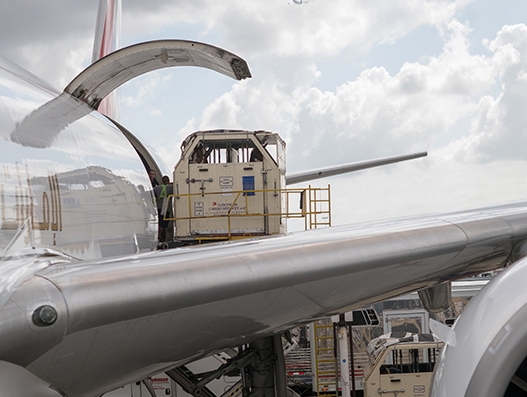
IATA outlines plan for transportation of live animals by air
April 6, 2018: The International Air Transport Association (IATA), recently launched CEIV Live Animals, a new standardised global certification program to improve safety and welfare of live animals travelling by air. The Center of Excellence for Independent Validators for Live Animals Logistics (CEIV Live Animals) provide guidelines to the air cargo handlers to implement highest […]

April 6, 2018: The International Air Transport Association (IATA), recently launched CEIV Live Animals, a new standardised global certification program to improve safety and welfare of live animals travelling by air.
The Center of Excellence for Independent Validators for Live Animals Logistics (CEIV Live Animals) provide guidelines to the air cargo handlers to implement highest standards in the transport of live animals.
“Last year, millions of animals travelled safely and securely by air. Animal owners and shippers rely heavily on airlines to carry their precious cargo. As an industry, we have a duty to ensure that standards and best practices are in place around the world, to protect the welfare of animals. For those shipping live animals, the CEIV Live Animals program provides a reliable quality benchmark. Just as CEIV Pharma that helps in providing quality standards for temperature-sensitive healthcare shipments, the new program extends the expertise to the important field of transporting and handling of animals,” said Nick Careen, senior vice president of airport, passenger, cargo and security, IATA.
Handling and transporting live animals is quite challenging. Every animal has its specific requirements. Hence, it’s critical to take into consideration the emotional response of the animals when placed in a special-purpose, if unfamiliar, environment by trained professionals. These were some of the prerequisites for the development of the CEIV Live Animals program, which is based on the IATA Live Animals Regulations (LAR), the worldwide standard for transporting animals by air.
The IATA LAR are based on professional and operational input from industry experts, which include veterinarians, animal welfare experts, as well as government agencies involved in the regulation of animal transportation, and non-governmental organisations with an interest in animal transportation.
The CEIV Live Animals program is expected to increases the level of competency, operations, quality management and professionalism in the handling and transportation of live animals in the air freight industry. Besides, it will reinforce training and compliance across the supply chain.
As a usual practice, independent validators conduct training and onsite audits to ensure the safety and welfare of animals while travelling by air across the world.
LIVE PILOTS
Understanding complex needs of stakeholders involved in the handling and transportation of animals by air was the key in developing the program. London’s Heathrow Animal Reception Centre (HARC), and Air Canada Cargo played a pivotal role in piloting the CEIV Live Animal program.
Robert Quest, assistant director, port health and public protection, HARC said, “Last year, about 16,000 dogs and cats, 400 horses, 200,000 reptiles, 2,000 birds and 28 million fish travelled through HARC. Safety and welfare of these animals was our main priority. So partnering with IATA to develop the CEIV Live Animals program was important to us. We look forward to continuing to work closely with IATA to further enhance the program, and support its worldwide adoption by companies across the supply chain, in the pursuit of operational excellence in the handling and transport of live animals by air.”
Tim Strauss, vice president, Air Canada Cargo said: “ Whether it is a family relocating with their pet, a flock of sheep relocating overseas, or zoo animals travelling to support conservation efforts, transporting animals by air is a complex and highly planned operation. Ensuring that animals travel in safe, healthy and humane conditions requires coordination across the supply chain. Air Canada Cargo is delighted to be part of the CEIV Live Animals program.”
PROTECTING ENDANGERED SPECIES
CEIV Live Animals also focuses on the importance to comply with the Convention on International Trade in Endangered Species of Wild Fauna and Flora (CITES) requirements, which includes CITES Guidelines for the Non-Air Transport of Live Wild Animals and Plants available in the LAR. CITES is the legally-binding agreement with 183 Parties (182 States and the EU) that regulates international trade of more than 36,000 species of animals and plants.
“Worldwide international standards and regulations govern the safety and welfare of animals being transport by air. The CEIV Live Animals program helps to ensure that any legitimately traded wildlife adheres to the IATA standards and CITES requirements and we welcome its development. It is through industry working cooperatively together that can we can most effectively implement these agreed standards and requirements, and also identify and tackle illegal trade in wildlife,” said John E Scanlon, secretary general, CITES.

